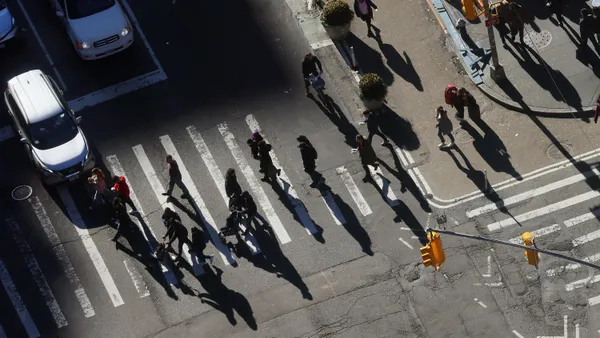Dive Brief:
- Although compensation in the fourth quarter of 2018 grew nominally by 1.1%, the slight uptick wasn’t enough to generate positive gains in wages for the year, according to a PayScale report. When accounting for inflation, wages actually declined, falling by 1.3% since the end of 2017.
- Wages for blue-collar workers were hit the hardest, according to the report, while technology and marketing saw the most growth. Geographically, California metropolitan areas led in wage growth, with San Francisco at the top, followed by San Jose and San Diego.
- "There is no question this is a turbulent period for the U.S. economy which means uncertain wage growth across many jobs and industries as well as a continual decline in real wages for most workers," said Katie Bardaro, PayScale’s chief economist, in a statement.
Dive Insight:
Wages grew 3.5% in 2018, increasing average U.S. pay by 95 cents to $27.81 an hour, according to ADP. But when looking at "real wages" adjusted for inflation, the average person can purchase less than they could last year, PayScale explained.
Employers are struggling to attract and retain talent in the tight labor market without raising wages substantially. Some say they're trying to remaining agile; others are similarly cautious about a predicted recession. Tech workers are receiving the lion's share of wage increases, in large part because of the high demand for their skills. But wage growth has been slow in other industries, even though pay remains the greatest motivator for both active and passive job seekers in deciding where to work.
Instead, some employers are turning to other benefits and perks. High on job seekers' lists of desirable offerings are flexible work schedules, paid family leave, career development opportunities and, perhaps most notably, meaningful work.












